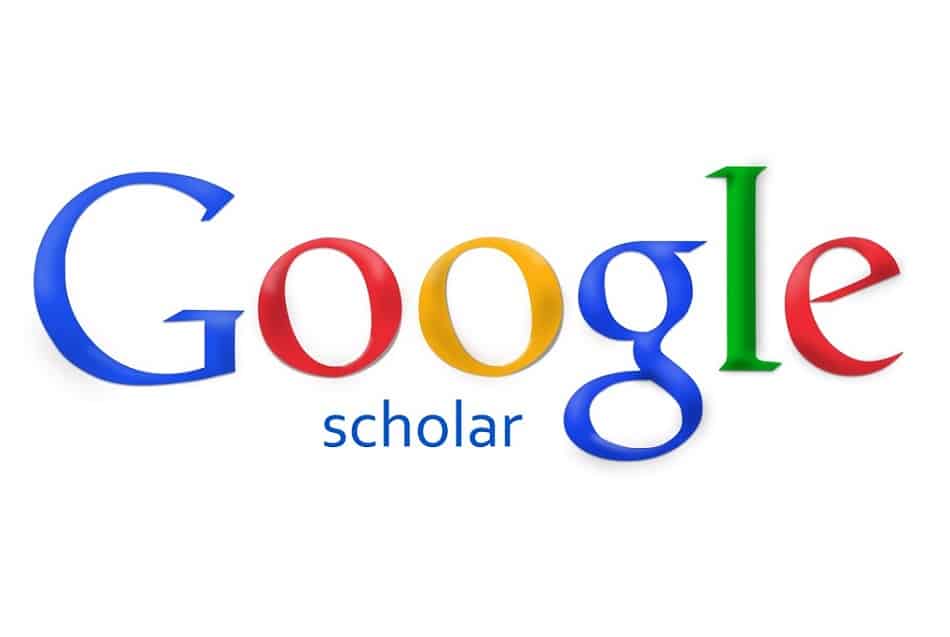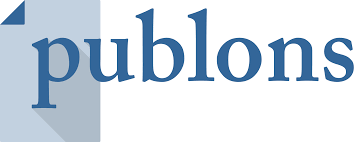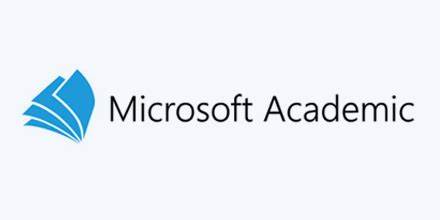About the Journal
Aim and Scope
South Asian Management Review (SAMR) is an Open Access Journal that strives for inclusivity and global reach. The Journal's broad scope creates a perfect environment to foster connections between researchers across all areas of Business & management research areas, from Operations Research to Corporate Governance and Accounting to Marketing.
Through Open Access publishing, we bring sound and scholarly research to people across the globe. Our Editor-in-Chief leads an expert and diverse international Editorial Board undertaking objective and constructive peer review. Each submission is evaluated on its scholarly merit and research integrity.
South Asian Management Review (SAMR) considers original research, review articles, letters, and replication studies in the following sections and broad topical areas:
Management
Encourages submissions that cover any area of management, including entrepreneurship, innovation, human resource management and careers, strategic management, international business, management education and development, gender and diversity in organizations, critical management studies, organizational behavior, organizational change, organization, and management theory. The section also welcomes papers that demonstrate relevance to business practice, policy, or potential for societal impact, and it is open to various research methods, models and platforms.
Operations Research, Supply Chain Management, and Information Technology
Publishes papers that demonstrate contribution to theory and practice in innovative product and service creation and delivery, as well as advanced information and technologies contributing to digital businesses and the knowledge economy. The following areas of research will be considered: product and service design, manufacturing and delivery, resource efficiency, process improvement, supply chain management, logistics management, quality & inventory management, supply chain risks and resilience, knowledge and information management, enterprise systems, decision support systems, and data analytics.
Marketing
Explain applying marketing principles and practices within academic, commercial, industrial, public sector, and non-governmental organisations. Marketing covers many important aspects of strategy, planning, communications, direct response marketing, media development, retailing, big data, technological innovations, and social responsibility.
Accounting, Corporate Governance & Business Ethics
Publishes research that explores financial reporting, disclosure, corporate governance, business ethics, earnings management, auditing, executive compensation, performance measurement and management, management control systems, investment appraisal and capital budgeting, taxation and transfers pricing, and contemporary social and environmental accounting issues.
Banking & Finance
Covers all aspects of the critical research areas of bank behavior and performance, merger and acquisition activity, risk management, and financial crisis. Within the sphere of finance research, an understanding of how corporations act in financing their activities, managing their risk, and their interactions with stakeholders is crucial.
What can you expect if you publish in the South Asian Management Review (SAMR)?
- Immediate, free access to your article for anyone anywhere in the world
- Rigorous peer review featuring constructive dialogue with experts
- Global marketing and high production values
Policy Document
The South Asian Management Review (SAMR) is an international journal for publishing high-quality peer-reviewed papers in the field of theoretical and applied management areas. The main objective of this journal is to exchange ideas about management sciences, marketing, business research, and so forth. The subject areas include, but are not limited to project management, business strategy and policy, finance and accounting, tourism management, risk management, takaful, entrepreneurship, insurance, applied economics, and Islamic finance.
Publishing Ethics and Malpractice Statements
Ethical standards for publication establish to secure public trust in scientific discoveries and to guarantee high-quality scientific publications. Concurrently, to assure that rightful researcher earns credit for their work and ideas. This journal is embracing the Committee on Publication Ethics (COPE) and takes by its core practices.
Article Assessment
All manuscripts are subject to approval by the editor. Prerequisite that the manuscripts completed peer review and satisfied the standard of academic excellence. Peer reviewers' identities will remain anonymous to the authors. Authors are allowed to mention excluded reviewers in their cover letters. However, the handling editor is not obliged to honor this information due to editorial requirements in peer review.
Our Research Integrity committee may consult experts and the academic editor beyond standard peer review for the case of submission with severe ethical, security, biosecurity, or societal implications, before imposing appropriate actions. This action also includes but is not limited to recruiting reviewers with specific expertise, assessment by additional editors, and declining to proceed for further submission consideration.
Plagiarism
The use of any words, figures, or ideas of others without attribution is prohibited. Authors must cite relevant sources at the point they are used, limit the reuse of wording, and attribute or quote the resources in the text.
The journal utilizes Turnitin Similarity Report to recognize submissions that overlap with published and submitted manuscripts.
If the manuscript is proven to be plagiarized from a manuscript by other authors, whether published or unpublished, the editor has the right to reject the manuscript. The authors may incur sanctions, and any published articles may need to be amended or revoked.
Duplicate Submission and Redundant Publication
This journal considers only original, unpublished content, including contents of articles written in a language other than English. The content of articles that were previously made public only on a preprint server, institutional repository, or in a thesis will be considered.
Authors are advised to withdraw manuscripts submitted to this journal if the manuscript was submitted elsewhere. Manuscripts that are found to have been simultaneously submitted elsewhere may be revoked, and the authors may incur sanctions.
If the content of the manuscript was taken from the authors' previously published work, or work under review, that previous article must be cited in the submitted manuscripts. The authors must clarify how the submitted manuscript differs from the previous one. Reuse of the authors’ own words outside the Methods should be attributed or quoted in the text. Authors are responsible for obtaining permission if the reuse of authors’ own figures or substantial amounts of wording requires permission from copyright holders.
The journal will consider extended versions of articles published at conferences. Required that the authors declared this information in the cover letter, and the previous version is cited and discussed. Also, there is significant new content, and any necessary permissions are obtained.
Manuscripts that are found to be redundant publications may result in rejection. Manuscripts that went through the inappropriate division of study outcomes into more than one article (salami slicing) may request to merge submitted manuscripts and the correction of published articles. Authors may incur sanctions, and the article may be revoked if the publication was found to be a duplicate of the same or a very similar article.
Citation Manipulation
Authors may incur sanctions if they purposely include the citation for the sake of increasing the number of citations to a given author’s work or articles published in a particular journal.
Editors and reviewers are prohibited from demanding authors to include references merely for manipulation purposes. Such as, to increase their citations or an associate’s work, increase the journal citations, or to another associated journal.
Fabrication and Falsification
Any fabricated or falsified results and manipulated images will not be tolerated. The authors of submitted manuscripts or published articles may incur sanctions, and published articles may be revoked.
Authorship and Acknowledgements
Authors who made a significant scientific contribution to the manuscripts must be listed. All listed authors must have made a notable scientific contribution to the research in the manuscript, approved its claims, and agreed to be an author.
Anyone who is not an author, who contributed to the research or manuscript preparation, should be acknowledged with their permission. The journal will not consider submissions by anyone other than one of the authors.
Conflicts of Interest
Any issues apart from research that could be reasonably perceived to influence the neutrality or objectivity of the work or its assessment must be declared to avoid a conflict of interest (COI). The declaration must be made to facilitate informed decisions on whether or not the potential conflicts of interest influenced the research. Usually, this declaration will not stop work from being published, nor will it always prevent someone from being involved in a review process.
Authors can discuss with the editorial office if they are unsure of declaring a potential interest. The editorial office may reject any submission with undeclared conflicts that are later revealed. Published manuscripts may need to be re-assessed, have a corrigendum published, or in severe cases, be retracted. For more information on COIs, see the guidance from the ICMJE and WAME.
Conflicts include the following:
- Financial—funding and other payments, goods, and services received or expected by the authors associating with the subject of the work or from an organization with interest in consequence of the work
- Affiliations—being employed by, on the advisory board for, or a member of an organization with interest in consequence of the work
- Intellectual property—patents or trademarks held by someone or their organization
- Personal—friends, family, relationships, and other close personal connections
- Ideology—beliefs or activism, for example, political or religious, relevant to the work
- Academic—competitors or someone whose work is critiqued
Responsibilities of Authors
Authors must disclose all potential interests and explain why the interest may be a conflict in a ‘Conflicts of interest’ section. If there are no potential interests involved, the authors should state, “The author(s) declare(s) that there are no conflicts of interest concerning the publication of this paper.” Submitting authors are responsible for coauthors declaring their interests.
Authors must declare current or recent funding and other payments, goods, or services that might affect the work in the ‘Acknowledgments’ section. This declaration must also include all funding acquired, whether regarded as a conflict or not.
Authors must also disclose anyone other than the authors involved, employed, or paid in the commissioning, conception, planning, design, conduct, or analysis of the work and the preparation or editing of the manuscript or the publication decision. Authors must include anyone with an interest in the research consequence or affiliated with an organization with such an interest.
Responsibilities of Editors
Editors and reviewers are advised to refuse to be involved with a submission when they
- Possess a recent publication or current submission with any author
- Share or recently shared an affiliation with any author
- Collaborate or recently collaborated with any author
- Have a close personal connection to any author
- Hold a financial interest in the subject of the work
- Incapable of being objective
- The editor and reviewers will contemplate the declared conflicts of interest and will include them in the published manuscripts.
The editor will review the declaration of any remaining interests made by reviewers in the ‘Confidential’ section of the review form. Any previous discussion regarding the manuscript between editors and the reviewers must be declared.
Responsibilities of Reviewers
- Any manuscripts received for review must be treated as confidential documents. They must not be shown to or discussed with others except as authorized by the editor.
- Reviews should be conducted objectively. Personal criticism of the author is inappropriate. Referees should express their views clearly with supporting arguments.
- Unpublished materials disclosed in a submitted manuscript must not be used in a reviewer’s own research without the express written consent of the author. Privileged information or ideas obtained through peer review must be kept confidential and not used for personal advantage.
- Reviewers should not consider manuscripts in which they have conflicts of interest resulting from competitive, collaborative, or other relationships or connections with any of the authors, companies, or institutions connected to the papers
Open Access Policy
All articles published by this journal are made immediately available worldwide under an open-access license. This means:
- Everyone has free and unlimited access to the full text of all articles published in this journal everyone is free to re-use the published material if proper accreditation/citation of the original publication is given;
- Open-access publication is supported by SAG Publishing for accepted articles.
Publication Fee: The publication fee is 120 USD and the author/s needs to pay this fee upon acceptance of the article in the SAG Publishing account.
Copyright and Licensing
This journal publishes articles under a CC BY license, which permits unrestricted use, distribution, and reproduction in any medium, provided the original work is properly cited and leaves the copyright of the article with the current copyright holder (usually the author or his/her institution).
Copyright (c) 2022 SAG Publishing
This work is licensed under a Creative Commons Attribution 4.0 International License.
Publication Schedule
The actual publication of a paper with volume and number bi-annually (02 Issues: June and December) every year.
Double-Blind Peer Review Process
The peer-review process consists of the following steps:
- Authors submit their manuscript via the “Journal Submission System” and may refer to the "Quick Submission”.
- The Managing Editor acknowledges receipt of the manuscript, checks the plagiarism, and assigns a manuscript ID for future correspondence.
- One member of the editorial board determines whether the manuscript fits well with the scope of the journals. If so, the manuscript will be submitted for comment to at least 2 reviewers (subject matter experts) for comment. The journal uses a double-blind peer-review process where both reviewers and authors do not know each other. If the editorial team believes that the manuscript does not fit the scope, a rejection email will be sent to the authors within 1 week.
- Reviewers are usually given two weeks. However, at some point, we extend the submission deadline, if requested. Once the feedback is received, the managing editor compiles all comments. After a discussion with the main editorial team (Managing Editor and Chief Editors), the managing editor submit all comments to the authors with a decision (minor, major, or reject).
- Once a revision is received from the authors, the managing editor forwards the revised manuscript and compliance report to the reviewers for their feedback. The process continues until the referees are satisfied.
- Based on the recommendation of the referees, the editorial committee (Managing Editor and Chief Editors) jointly decides and informs the author(s) about the final decision. If accepted, the final manuscript version will be submitted to the production team for formatting in accordance with the guidelines.
- Production team contacts authors to check the final proof before publishing it online. The process will continue until all issues/corrections are addressed.
- The production team will then upload and publish the article and officially notify the authors.
Screening for Plagiarism
The manuscript submitted to this journal will be screened for plagiarism using the Turnitin plagiarism detection tool. The editor will immediately reject papers leading to plagiarism or self-plagiarism (should be below 15% of similarity).
The journal wants to ensure that all authors are careful and comply with international standards for academic integrity, particularly on the issue of plagiarism.
Plagiarism occurs when an author takes ideas, information, or words from another source without proper credit to the source. Even when it occurs unintentionally, plagiarism is still a serious academic violation and is unacceptable in international academic publications.
When the author takes an idea from another author, a citation is required even if the author then develops the idea further. This might be an idea about how to interpret the data, either what methodology to use or what conclusion to draw. It might be an idea about broad developments in a field or general information. Regardless of the idea, authors should cite their sources. In cases where the author develops the idea further, it is still necessary to cite the original source of the idea, and then in a subsequent sentence, the author can explain her or his more developed idea.





